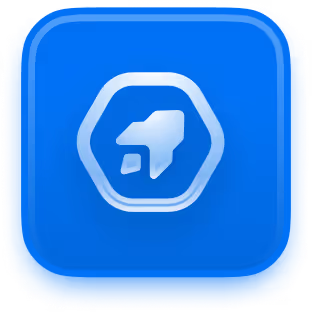
Segmentation Techniques for E-commerce Cold Email Campaigns

In the world of e-commerce, reaching the right audience is crucial for the success of any business. One effective way to achieve this is through targeted cold email campaigns using a cold email platform.
But nowadays, standing out in the competitive market requires more than simply sending the same emails to everyone. That's why we use segmentation techniques.
Segmentation means splitting up your email list into smaller groups. We accomplish this by examining factors such as individuals' age, their previous purchases, and their behavior patterns. In this article, we'll talk more about how we use segmentation in e-commerce cold email campaigns.
Understanding Segmentation in E-commerce
In online shopping, we divide customers into groups based on age, previous purchases, browsing habits, and interests. This is referred to as segmentation.

This helps create messages that are just for them, discussing things they're interested in or need. This enhances the effectiveness of marketing.
When businesses know their ideal customer groups, they can plan better strategies that truly connect with people and make them more likely to buy.
Basics of Customer Segmentation
Customer segmentation is like a plan for dividing a market into different groups. It means finding things that make each group unique, so we can use the right marketing for each one.
Splitting your audience into groups makes a stronger connection by making things more personal. It lets us send messages that fit each person's likes and what they did before, making our talks more successful and boosting sales.
Importance for Cold Email Success
Segmentation underpins the efficacy of cold email campaigns, honing the relevancy of each message.
- Increased Open Rates: Grouping people increases email readership as the content is tailored to their specific needs.
- Enhanced Engagement: Personalized emails engage more people by discussing topics they value, increasing interest and involvement.
- Higher Conversion Rates: Customized emails lead to more purchases from potential buyers in a specific group.
- Resource Optimization: It allows for the efficient allocation of marketing resources by targeting those most likely to convert.
- Customer Lifetime Value: Email campaigns build strong customer relationships, boosting their long-term value.

Common Pitfalls to Avoid
Sending the same message to everyone may not interest many people because it doesn't consider personal preferences.
Dividing into small groups can be problematic because it can lead to excessive focus on one thing. This excessive focus may cause individuals to miss out on opportunities to connect with other groups.
Also important not to forget that what people like and do can change. Thus, when we divide tasks, it's crucial to stay updated with current market trends and understand what appeals to people at present.
Crafting Your Segmentation Strategy
In the complex world of selling things online, splitting customers into groups is not just a trick – it's something you need to do. To figure out what makes each group of customers special, you must be careful and use a smart method. This method means gathering contact information and using your instincts to understand things better.
If you own a business and are sending cold emails, it's crucial to think about different things. This includes details about your customers like their age, what they usually buy, and their interests. When you plan how to split your customers into groups, make sure to keep these factors in mind.
Keep in mind that the success of your cold email campaigns depends on carefully dividing your customers into groups. This way, each message becomes like a targeted arrow, aimed right at getting customers interested.
Data-Driven Audience Analyzing
Using data is key to making segmentation work well. When business owners start sorting customers for cold email campaigns, they need to use strong data tools.

This includes info about age, what customers do, what they buy, and their interests. All this data helps find different groups of people. Also, advanced tools use predictions to guess what customers might buy in the future.
Behavioral Data Provides Actionable Insights.
For improved segmentation, observe the purchasing habits and online activities of individuals. Noticing patterns helps create specific cold email campaigns that match customer preferences and behaviors.
Analytics Unveil Opportunities for Personalized Engagement.
Making segmentation work well depends on having the latest and most detailed information. Keeping an eye on how customers act, especially with things changing quickly in the online shopping world, is crucial.
Business owners should use smart tools for analyzing data. This way, they can make strategies based on the newest information, allowing them to take a personalized approach. This ongoing crystallization crystallizes the blueprint for a deeply resonant cold email strategy.
Behavioral vs. Demographic Targeting
Behavioral targeting means using what a customer does to create messages that fit their actions and habits. Demographic targeting groups potential customers based on fixed factors like age, gender, income, education, and ethnicity.
Demographics focus on basic details, while behavioral data looks at how customers engage, including purchases, website navigation, and product preferences.
Lifecycle Stage Considerations
Understanding the lifecycle stage of your potential customer is paramount in crafting an effective cold email campaign.
- Acquisition Phase: Prospects at the inception of their journey, may be unaware of your brand or product.
- Engagement Phase: Prospects who have interacted with your brand, but have not yet made a purchase.
- Conversion Phase: Prospects who have shown a clear intent to purchase or have added items to their cart.
- Retention Phase: Customers who have made a purchase could become repeat buyers.
- Reactivation Phase: Previous customers who have not interacted with your brand for a significant period.

Tools and Techniques for Segmentation
Smart data tools provide valuable insights into customer behavior and details, facilitating accurate customer segmentation. Using AI tools to group customers makes the process smoother, allowing your cold email outreach to be more focused.
Leveraging CRM for Deep Insights
To harness the full potential of Customer Relationship Management (CRM) tools, a granular approach to analyzing data is imperative.
- Customer purchase history: Identify patterns and frequency of purchases to predict future buying behavior.
- Interaction tracking: Monitor customer interactions with emails and websites to gauge interest levels.
- Segmentation by demographics: Utilize age, location, and occupation to tailor email campaigns.
- Behavior-based segmentation: Use browsing and search patterns to infer product preferences.
Email List Segmentation Software
Effective email list segmentation is vital for targeted cold email campaigns, paving the way for higher engagement rates.
- Mailchimp: Offers advanced segmentation features including behavioral targeting and predictive demographics.
- HubSpot: Integrates email segmentation with broader CRM capabilities for a unified approach with HubSpot.
- Constant Contact: Boasts easy-to-use segmentation tools suitable for small to medium-sized businesses.
- Campaign Monitor: Provides dynamic segments that update in real-time based on set criteria.
GetResponse: Features automation workflows that trigger based on segmentation for efficient campaigns.
Enhance your E-commerce Cold Email Campaigns with Success.ai’s lead finder Tool. Precision targeting, automated list building, and personalized outreach at scale ensure maximum impact. Track performance seamlessly with integrated analytics. Elevate your strategy and drive conversions effortlessly.

A/B Testing for Fine-Tuning
A/B testing is crucial to make cold email campaigns better. It helps us figure out what works best for different groups by trying out different strategies. Through thorough testing, we can find the messaging and design elements that work most effectively.
By analyzing A/B test results, a company can learn how its audience reacts to small details. When businesses adjust based on these discoveries, they create a way to get more people interested and buying.
Optimization is an ongoing thing where we keep testing, learning, and making things better. The way marketing strategies keep changing and improving is truly important.
Segmentation Applied to Campaigns
Making e-commerce cold emails work well means putting potential customers into groups based on things like age, what they do, and their interests. When we create emails that match each group's special qualities, it makes the emails more relevant and more likely to grab people's interest.
Segmenting your audience enhances the effectiveness of cold emails. It helps you talk to different groups of customers in a way that feels personal. To do this, you carefully separate them based on what you want to achieve with your email marketing campaign.
Writing Compelling Content for Segments
Creating interesting content for different groups needs a careful choice of words and matching themes. City youth prefer tech and efficiency, while retirees like secure and user-friendly content. The key is to make sure the content connects with the specific challenges and dreams of the group you're aiming for.

Content variety is essential for engagement – think blog posts, infographics, and videos. This type caters to various preferences and understands what the audience wants and how they act. Ultimately, driving higher engagement rates through format versatility reflects the nuanced approach of a sophisticated segmentation strategy.
With our AI email writer tool, you can save time and effort by automating the content creation process. The tool studies each segment's traits and preferences, creating compelling email content that connects with your audience.
Timing and Frequency Optimization
Delving into optimal email dispatch timing ensures message visibility. Deciding strategically when users are most likely to interact requires a comprehensive examination of user behavior trends. This involves careful research and testing to find the best times for audience engagement based on their daily routines.
When you get too many emails, it can be overwhelming and make you less likely to open them or unsubscribe. Therefore, striking a balance, being persistent yet mindful of the risk of inundation is critical. Being cautious when sending emails shows respect for the recipient's inbox, increasing the chances of a positive response.
Heightened anticipation coupled with structured predictability fortifies trust. Establishing a regular, yet not overbearing, email cadence nurtures a sense of dependability that customers appreciate. It transforms your messages from intrusive interjections into awaited insights, cementing a foundation for a lasting relationship. Utilize our email outreach tool for sending timely emails and get maximum engagement.
Measuring Campaign Effectiveness
Understanding the impact of your targeted e-commerce cold email campaigns is essential for quantifying their success. To do so, you must identify and track specific, actionable key performance indicators (KPIs).
Includes metrics such as open rates, click-through rates, conversion rates, and eventually, revenue generated per email sent. Analyzing these KPIs helps you see how well your campaigns are doing and find areas to improve.

By matching this data with the customer's lifetime value, e-commerce companies can improve their segmentation and targeting strategies. This helps build stronger and longer-lasting customer relationships, making their marketing efforts more effective and efficient.
Conclusion
Segmentation techniques can improve e-commerce email campaigns, increasing engagement and ultimately boosting business success.
So, take the time to understand your audience, segment your email list, and deliver personalized messages that truly resonate. Your hard work will pay off with more loyal customers, more sales, and a stronger brand in the competitive online market.
Now, use the information and methods from this article to improve your e-commerce cold email campaigns and see them succeed.
Try Success.ai's tools to achieve your goals. Our email marketing tools help you fully utilize segmentation and boost your e-commerce cold email campaigns for success.


Try Success.ai No credit card required
Unlock unlimited access to 700M+ B2B leads, with unlimited email sending & warm-up. Supercharge your growth now with Success.ai!
















.avif)


.avif)





.avif)






.avif)












.jpg)

-min.jpg)









.avif)
.svg)
.avif)

